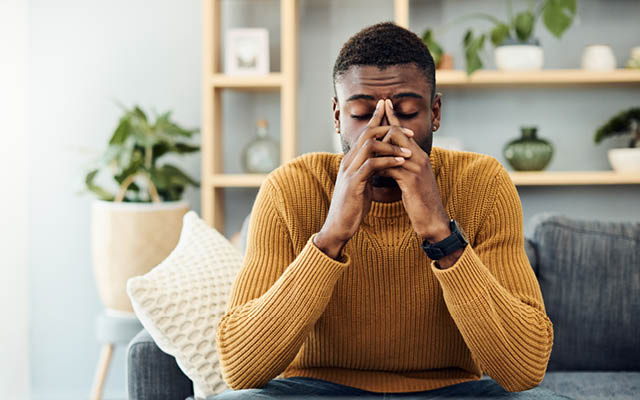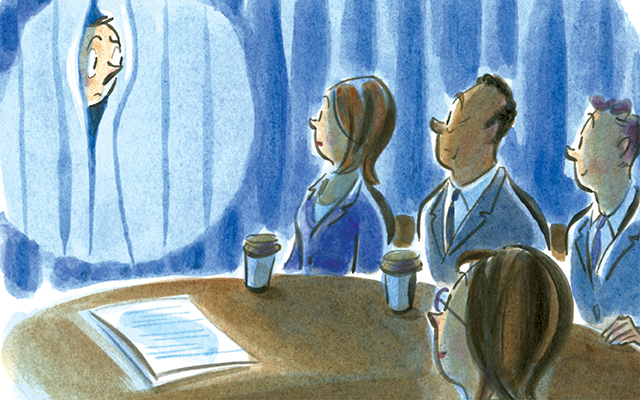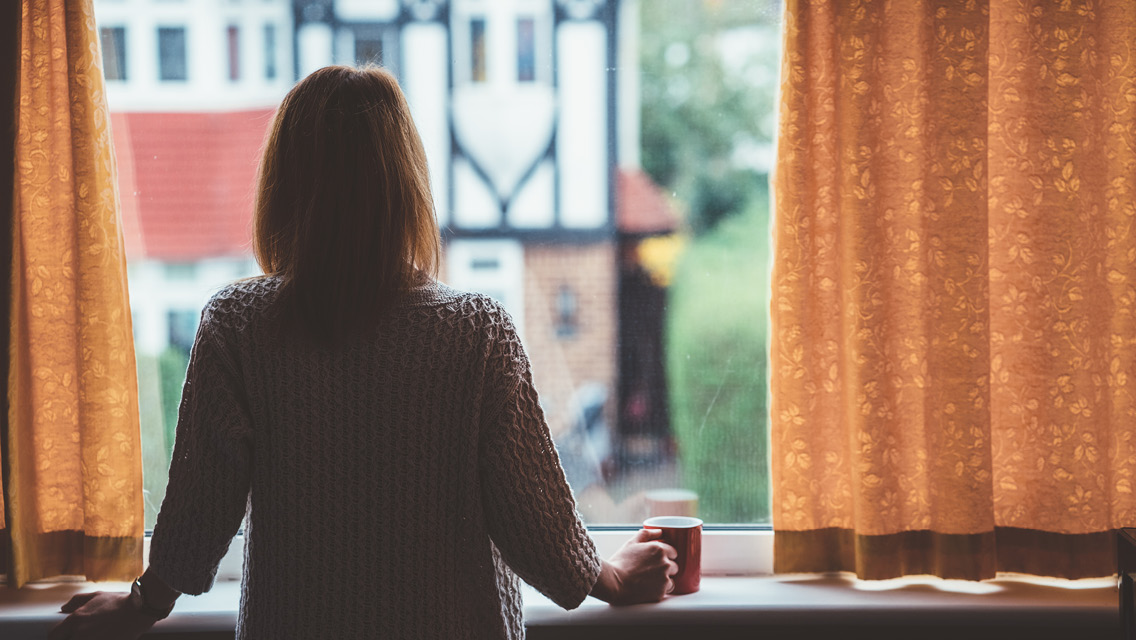Most of us become nervous, shy, or self-conscious around others from time to time. But for some people, the anxiety feels so excruciating that they dread social situations, or even avoid them entirely.
Social Anxiety Disorder (SAD), also known as social phobia, is one of the most common mental-health disorders, affecting roughly 7 percent of American adults and 9 percent of teenagers. Most people develop SAD during adolescence. Onset in adulthood is relatively rare: Seventy-five percent of individuals who meet the criteria for SAD began experiencing symptoms before age 15. And sometimes those who struggle with social anxiety in adolescence find it resolves or at least becomes manageable with age.
When it doesn’t resolve, the disorder can be disruptive. SAD is associated with an elevated risk of leaving school, which often leads to a lower socioeconomic status. Individuals diagnosed with SAD are more likely than average to live alone. SAD also increases one’s risk for other mental-health conditions, including depression and substance abuse. Moreover, the longer SAD goes untreated, the worse it can become; avoidance acts as a form of kindling.
Read on to better understand what SAD is, what it isn’t, and how to treat it.
What Is Social Anxiety Disorder?
SAD is characterized by persistent, debilitating anxiety in social situations. Anxiety-provoking situations can include striking up a conversation with someone new, eating or drinking in front of others, speaking in front of a group, or simply mingling with unfamiliar people. Individuals with this disorder tend to avoid such scenarios — skipping school or declining invitations for social gatherings — or, at best, endure them with gritted teeth.
Individuals with SAD fear that others are judging, mocking, or otherwise scrutinizing their behavior. Some worry that people judge the visible manifestations of their anxiety, like flushed cheeks or sweaty palms. SAD sufferers often imagine themselves inadvertently offending someone or humiliating themselves in public. These fears can generate significant anticipatory anxiety (worrying in advance) and rumination (worrying after the fact), resulting in anguish that persists long before or after one even leaves the house.
This represents a crucial distinction between SAD and introversion. Introverts may find social gatherings draining or generally prefer to be alone, but they do not experience the kind of gut-wrenching discomfort that accompanies true social anxiety (see “How Introverts and Extroverts Can Talk to Each Other” for more). And though individuals with SAD tend to rate higher on scores of introversion, studies suggest some 38 percent of SAD sufferers are actually extraverts. In other words, one can both desire and dread social connection.
An individual diagnosed with SAD typically experiences symptoms across multiple social settings. Someone who becomes anxious about speaking in front of a crowd but feels comfortable navigating parties and meeting new people would not necessarily meet the criteria for the disorder. Additionally, symptoms must persist for at least six months, which helps rule out social anxiety stemming from situational factors such as a recent breakup or change in appearance.
What Causes Social Anxiety Disorder?
Social anxiety is heritable: First-degree relatives of individuals with SAD are two to six times more likely than average to meet SAD’s criteria themselves. But, as with most mental-health disorders, genetics are only part of the picture.
Research generally supports the idea that our personalities are at least partially shaped by our genes. And though social anxiety is not itself a personality trait, the disorder is far more common among individuals who score high on introversion and on neuroticism, defined as an outsized tendency to experience negative emotional states like anxiety, depression, and self-consciousness.
Social anxiety is like being afraid of our shadow: The more we run from it the bigger it gets. But if we turn and face it, we realize it can’t really hurt us.
Nature influences our susceptibility to SAD, but nurture matters, too. Adverse life events in childhood can increase one’s likelihood of developing the disorder. Bullying, sexual or physical abuse, and violence in the home have all been linked to higher rates of social anxiety, as has separation from a parent due to divorce, death, or incarceration.
Parenting styles may also influence the course of the disorder. Some studies suggest that children raised by highly controlling or critical parents are more likely to develop SAD, as the rigid home environment stifles their capacity for autonomy and self-efficacy. Additionally, parents can model attitudes and behaviors that might increase the likelihood of their children developing SAD. A parent who constantly worries about how others perceive them, for example, may inadvertently teach their child to adopt these same concerns.
How parents react to early signs of social anxiety can also determine whether it progresses into a full-blown disorder. Repeatedly acquiescing to a child’s fears — for example, letting them stay home from school or avoid peer interactions — actually strengthens the child’s anxiety by essentially teaching them to avoid rather than confront their fears.
In a way, social anxiety is like fearing our own shadow. The more we run from it, the bigger it gets; our avoidance only feeds the fear. But if we turn and face it, we realize it can’t really hurt us.
SAD Treatment
The first step in treating any mental-health disorder is acknowledging the problem. Especially among those who persistently avoid triggering situations, it can be tempting to minimize the impact of SAD symptoms. Moreover, with the pandemic-fueled rise of virtual alternatives to in-person gathering, it’s become increasingly easy to reinforce avoidance — and inadvertently “feed the shadow.”
Treatment typically involves cognitive behavioral therapy (CBT), exposure therapy, or a combination of the two.
- Cognitive behavioral therapy involves identifying and challenging distorted thoughts (“Everyone must be secretly laughing at me”; “If I say the wrong thing, all my friends will abandon me”) as well as changing unhelpful behaviors. For example, someone who typically responds to physical symptoms of social anxiety like sweaty palms by hiding in the bathroom would practice new, more adaptive responses such as taking a deep breath and asking a peer about their day.
- Exposure therapy involves purposely placing oneself in a fear-inducing situation, usually starting with a relatively low-stress situation and gradually advancing to more triggering conditions. Often, the feeling of anxiety wears off with time — sort of like repeatedly watching a scary movie until it loses its impact. But even if feelings of anxiety remain after repeated exposure to a feared situation, the individual learns that they can tolerate those feelings. The shadow may never completely disappear, but they no longer need to run from it.
Social Anxiety Disorder and the Pandemic
We know that avoiding our fears only strengthens them. For those who already struggled with Social Anxiety Disorder (SAD) prior to the pandemic, calls to avoid gathering in public may have served a reinforcing function. A 2021 study of socially anxious college students found that symptoms remained high during pandemic lockdowns as compared to previous years, when symptoms abated over time — further evidence that exposure to social situations helps mitigate anxiety while avoidance can reinforce it.
But what about people who didn’t necessarily exhibit SAD symptoms prior to the pandemic? Attempts to identify a causal link between social distancing and the onset of SAD have been inconclusive, yet only time will tell whether rates of SAD increase among a generation of children facing prolonged social isolation. Among those already susceptible to social anxiety — whether by nature, nurture, or a combination of the two — it’s possible that the pandemic will set the wheels in motion.
This article originally appeared as “Understanding Social Anxiety Disorder” in the October 2022 issue of Experience Life.





This Post Has One Comment
Thank you. I am the person you describe and have suffered from this as long as I can remember. I have a career in sales strangely enough; and this disorder impacts me every day. There is no cure however — I disagree on this point. Thank you again.